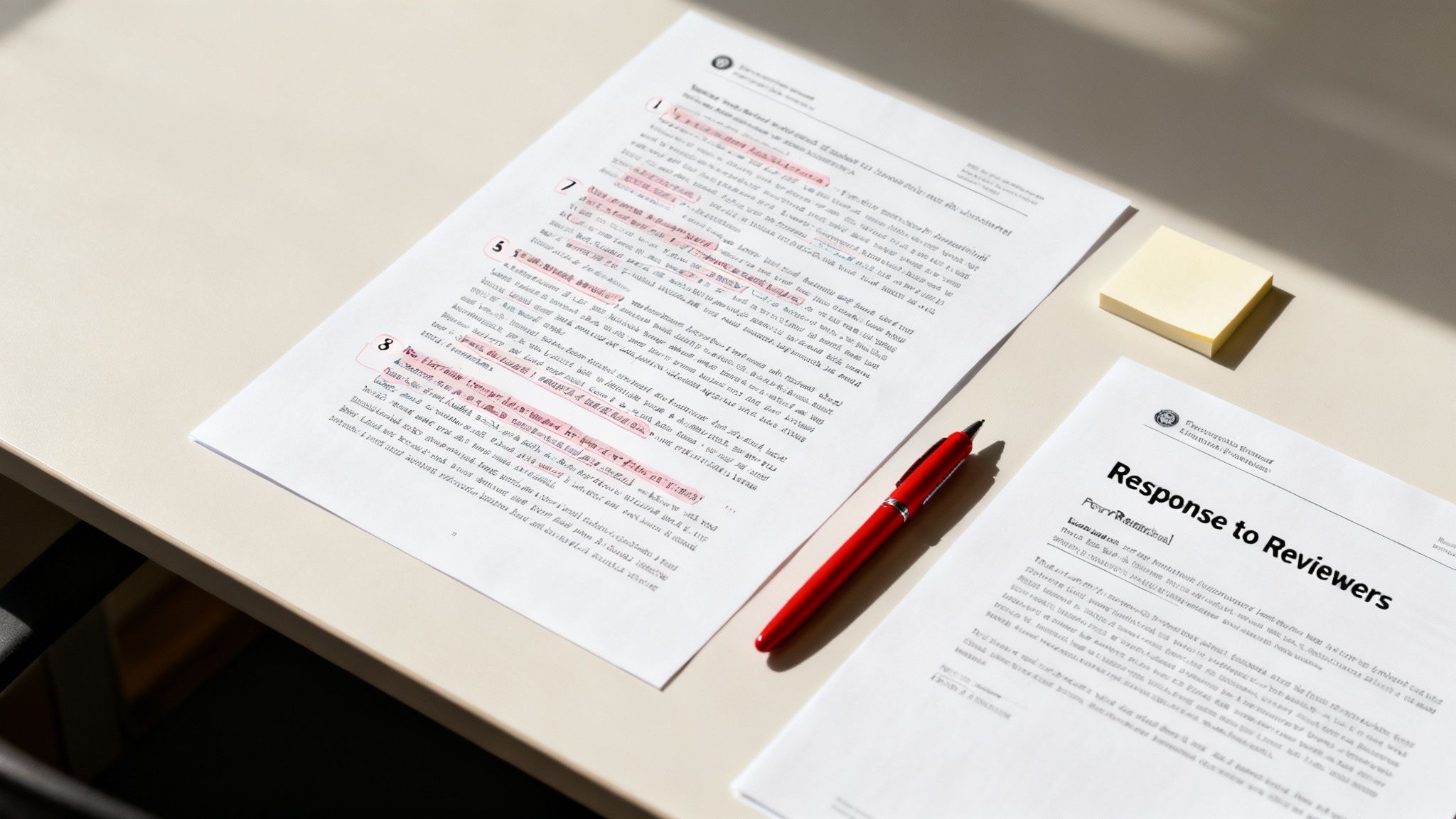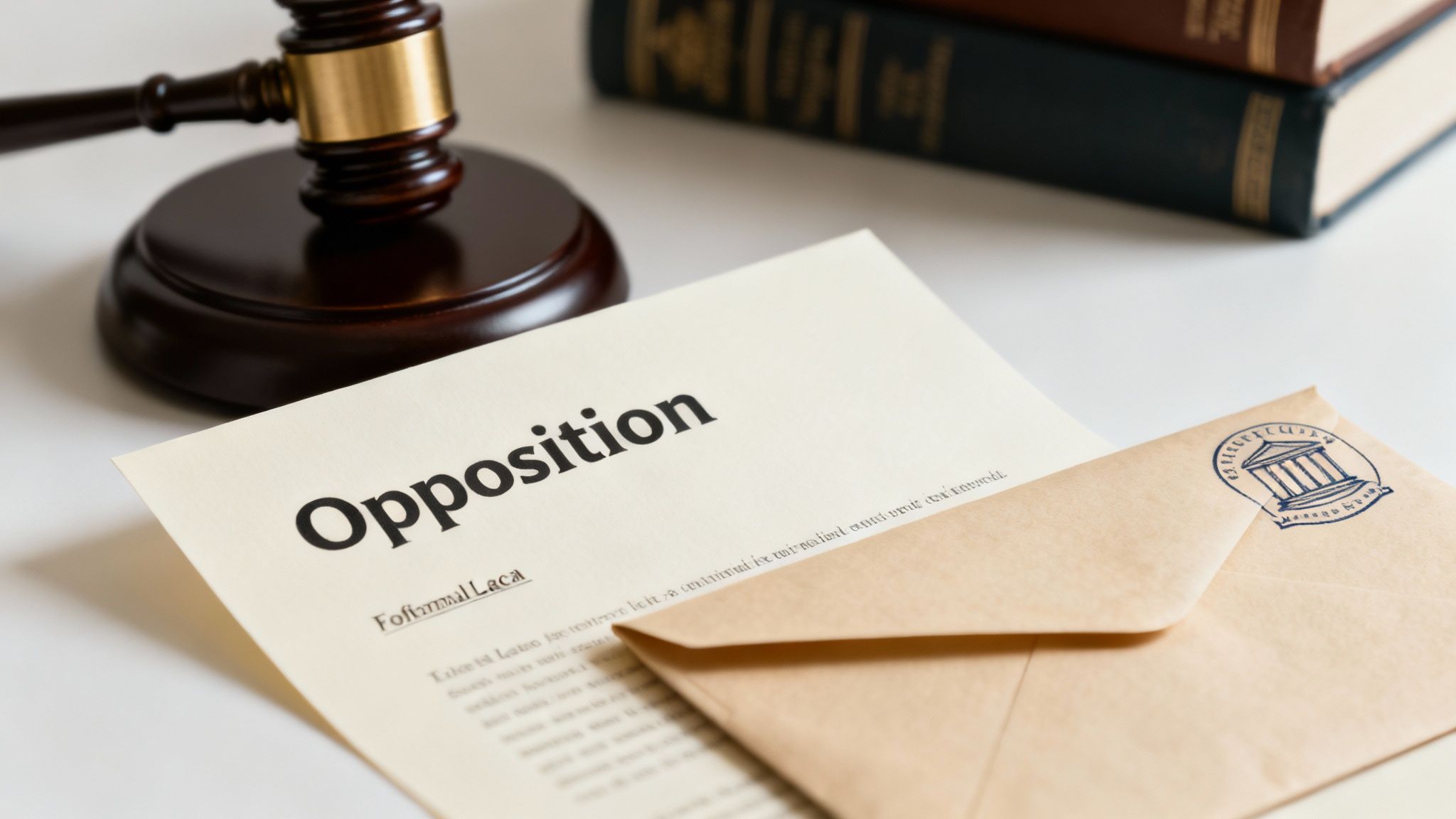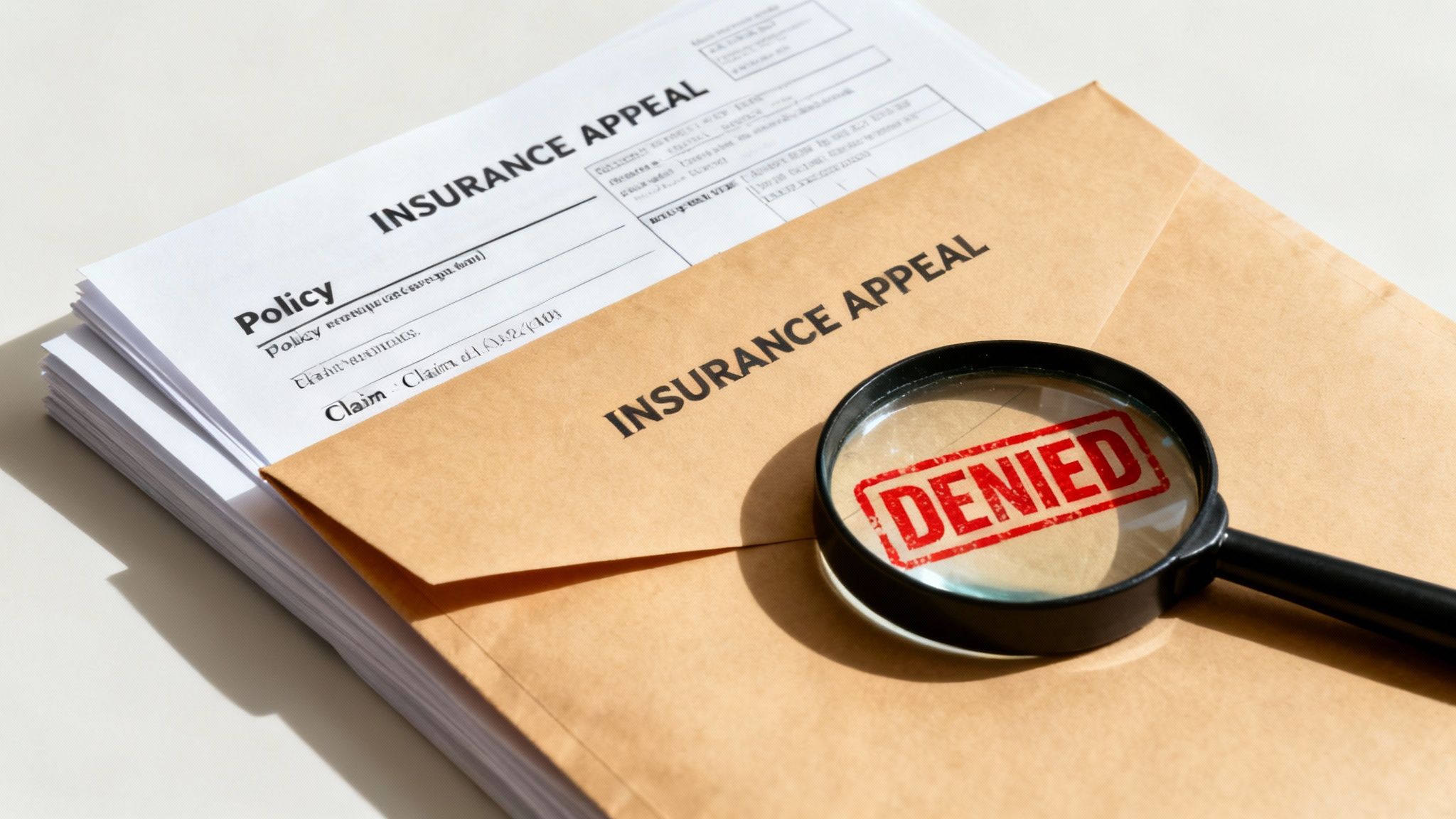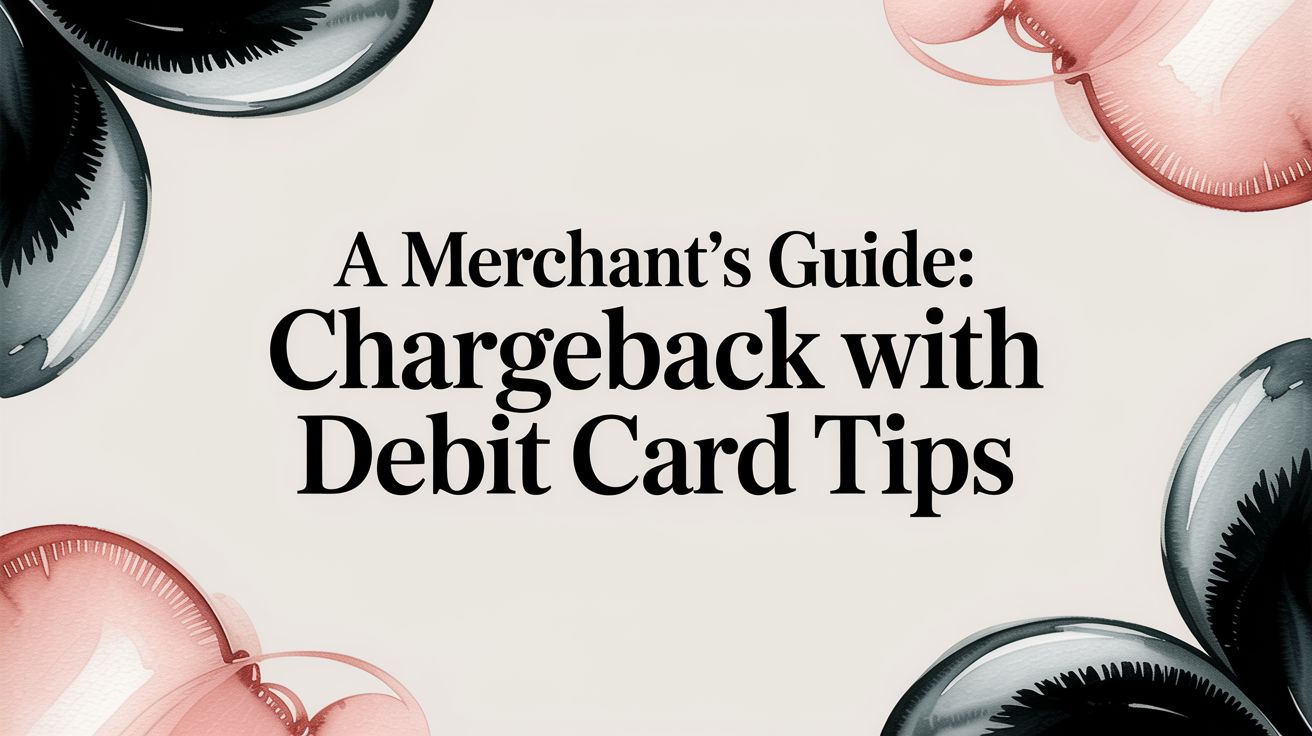
Getting a decision you disagree with can be frustrating, whether it's a denied insurance claim, an unfair performance review, or a legal notice that seems off base. But a well-written rebuttal letter is your most powerful tool to formally push back. It’s not about emotional arguments; it's about presenting your case clearly, factually, and persuasively to overturn a decision.
This guide moves beyond generic advice to provide seven distinct, customizable example rebuttal letter templates for real-world scenarios. We break down each one, showing you the exact structure and language to use. Developing strong arguments for your rebuttal letter heavily relies on your ability to improve critical thinking skills, allowing you to analyze the situation and respond effectively.
From academic peer reviews to disputes with your credit bureau, you will learn how to:
- Structure a logical, evidence-based argument.
- Maintain a professional and firm tone.
- Clearly state the specific outcome you are requesting.
Each example comes with a tactical breakdown and actionable takeaways you can apply immediately. Let's dive into the templates that will help you state your case and get the result you deserve.
1. Academic Paper Rebuttal Letter
An academic paper rebuttal is a formal, point-by-point response to critiques from peer reviewers during the journal or conference submission process. It's a critical document that can determine whether your research gets published. Your goal is to respectfully address every concern, clarify misunderstandings, and detail the revisions you've made to improve your manuscript, convincing the editor and reviewers that your paper is ready for publication.

Why It’s a Crucial Skill
In the tough world of academic publishing, a well-crafted rebuttal letter demonstrates your professionalism and commitment to solid scholarship. It shows you can engage constructively with criticism, which is a cornerstone of the scientific process. Effectively persuading reviewers can turn a "major revisions" or even a "reject" decision into an "accept."
Strategic Breakdown
A strong academic rebuttal letter isn't just a simple reply; it's a strategic document. The key is to manage the conversation and frame your responses in the most positive and constructive light.
- Structure is Everything: Organize your response by reviewer. Address each of the reviewer's points individually, using a numbered or bulleted list that directly corresponds to their original comments.
- Tone Matters: Always start by thanking the reviewers for their time and valuable feedback. This sets a collaborative, not confrontational, tone. Even when you disagree, remain professional and courteous.
- Evidence is Your Ally: If you disagree with a reviewer's point, don't just state your opinion. Back up your position with data from your study, established literature, or additional analysis.
Key Tactic: When a reviewer misunderstands a point, gently clarify by saying something like, "We apologize if our original phrasing was unclear on this point. We have revised Section 3.2 to more clearly state that..." This accepts responsibility for the lack of clarity without being defensive.
Actionable Takeaways
- Create a Response Table: Use a two-column table. In the left column, copy the reviewer’s comment. In the right column, write your response and describe the corresponding change in the manuscript, including the page and line number.
- Highlight Major Changes: If you ran new experiments or performed significant new analyses based on feedback, state this upfront in your introduction. This shows you've taken their suggestions seriously.
- Admit Limitations: No study is perfect. If a reviewer points out a valid limitation, acknowledge it. You can explain why it doesn't invalidate your core findings or add it to the "Limitations" section of your paper.
Mastering this type of letter is a fundamental skill for any researcher. For a deeper dive into structuring your response, you can explore more resources on the proper rebuttal letter format.
2. Legal Opposition/Response Letter
A legal opposition or response letter is a formal document submitted to a court or opposing party that counters a legal motion, claim, or argument. This type of rebuttal is a key part of the legal system, presenting counterarguments, citing legal precedents, and providing factual evidence to dismantle the other side's position. It is commonly used in litigation to oppose motions for summary judgment, respond to cease-and-desist letters, or contest injunction requests.

Why It’s a Crucial Skill
In legal proceedings, silence can be interpreted as agreement. Failing to respond effectively to a motion or claim can result in a default judgment or a court ruling against you. A well-argued legal rebuttal demonstrates the strength of your case, protects your rights, and forces the opposing side to contend with your legal and factual arguments, potentially leading to a favorable ruling or settlement.
Strategic Breakdown
A powerful legal opposition letter is more than a simple denial; it is a carefully crafted argument designed to persuade a judge or legal body. The strategy revolves around precision, following the rules, and compelling arguments.
- Rule-Based Precision: Legal writing is governed by strict procedural rules (e.g., FRCP, local court rules) regarding formatting, deadlines, and content. Following these rules is non-negotiable and shows respect for the court.
- Logical Structure: Each point raised by the opposing counsel must be addressed methodically. Structure your response with clear topic sentences and headings for each argument to guide the reader through your logic.
- Authoritative Support: Your arguments must be grounded in law. Cite controlling statutes, regulations, and case law (precedent) to support your position and lend it legal authority.
Key Tactic: Frame your response as a direct answer to the opposing party's claims. For instance, "Opposing counsel's motion fails because it misinterprets the relevant statute. As established in Case v. Case, the law requires..." This directly challenges their foundation.
Actionable Takeaways
- Adhere to Deadlines and Formatting: The first step is compliance. Check local court rules for deadlines, page limits, and formatting requirements. Missing a deadline can cause your entire response to be dismissed.
- Use Exhibits and Declarations: Strengthen your factual arguments by attaching supporting evidence. This can include sworn statements (declarations), documents, or other exhibits that corroborate your claims.
- Address Every Point: Create a checklist of every argument made by the opposing party and ensure your response addresses each one. Leaving an argument unanswered can be seen as a concession. For those drafting a legal opposition letter, understanding the structure of legal arguments is crucial, and resources such as case brief templates can offer valuable guidance.
Crafting a compelling legal response is a specialized skill. For a more detailed look at structuring your arguments, you can explore this letter of rebuttal sample.
3. Employee Performance Review Rebuttal
An employee performance review rebuttal is a formal written response from an employee who disagrees with, or wishes to add context to, a recent performance evaluation. This document is your official opportunity to present facts, correct inaccuracies, and ensure your perspective is permanently included in your personnel file alongside the original review. It's a tool for documentation, not just argumentation.
Why It’s a Crucial Skill
At work, your performance review is a permanent record that can influence promotions, raises, and future job opportunities. If a review contains inaccuracies, selective criticism, or overlooks significant achievements, a well-written rebuttal ensures the record is balanced. It demonstrates that you are engaged, proactive, and committed to a fair and accurate representation of your contributions.
Strategic Breakdown
A successful performance review rebuttal is professional, objective, and fact-based. Your goal is to correct the record and provide missing context without appearing defensive or emotional.
- Focus on Facts, Not Feelings: The most effective rebuttals are built on specific, verifiable examples. Instead of saying "I'm a hard worker," provide data: "In Q3, I exceeded my sales quota by 15% and brought in three new client accounts, which was not mentioned in my review."
- Maintain a Professional Tone: Wait at least 24 hours after receiving the review to write your response. This cooling-off period helps you draft a measured, calm, and objective letter, which is far more persuasive than an emotional reaction.
- Structure for Clarity: Address each point from the review you are contesting separately. Use headings or bullet points to clearly link your rebuttal to the specific comment in the evaluation. This makes your response easy for HR and management to follow.
Key Tactic: Frame your rebuttal as an effort to provide a more complete picture. Use phrases like, "I would like to provide additional context regarding the feedback on Project X," or "To ensure my file accurately reflects my contributions, I want to highlight the following achievements from the review period." This sounds collaborative rather than confrontational.
Actionable Takeaways
- Request a Copy Immediately: Always ask for a physical or digital copy of your signed performance review. You cannot write a specific, point-by-point rebuttal without the exact wording of the evaluation in front of you.
- Stick to Specific Examples: Counter vague criticisms with concrete evidence. If a review states you have "poor communication skills," rebut it with examples of successful presentations, positive client feedback emails, or collaborative projects you led.
- State Your Desired Outcome: Conclude your letter by clearly stating what you want to happen. The most common and reasonable request is: "I respectfully request that this letter be attached to my performance review and included in my official personnel file."
Crafting this type of letter requires careful thought and a professional approach. For more guidance on structuring your arguments, you can find helpful information in this employee performance review rebuttal letter template.
4. Credit Report Dispute Rebuttal Letter
A credit report dispute rebuttal letter is a formal document you send to credit bureaus like Equifax, Experian, or TransUnion to challenge inaccurate information on your credit report. This letter is your primary tool for correcting errors that can unfairly lower your credit score, such as fraudulent accounts, incorrect payment histories, or duplicate entries. By law, the bureaus must investigate your claim and remove any information they cannot verify.
Why It’s a Crucial Skill
Your credit report is a financial snapshot that lenders use to make big decisions about loans, mortgages, and credit cards. An inaccurate report can cost you thousands in higher interest rates or lead to outright denials. Knowing how to write an effective dispute letter empowers you to take control of your financial reputation, ensuring the data that defines your creditworthiness is accurate and fair.
Strategic Breakdown
A successful credit report dispute is built on clarity, precision, and proper documentation. You aren't just asking for a change; you are presenting a case that compels the credit bureau to act according to federal law, specifically the Fair Credit Reporting Act (FCRA).
- Be Direct and Factual: State clearly which item you are disputing, providing the account number and explaining exactly why it is incorrect. Avoid emotional language and stick to the facts of the case.
- Provide Concrete Proof: Your claim is only as strong as the evidence supporting it. Include copies of bank statements, police reports (for identity theft), letters from creditors, or any other documents that prove the information is wrong.
- Formality is Key: Send your letter via certified mail with a return receipt requested. This creates a legal paper trail, proving when the bureau received your dispute and starting the clock on their legally mandated investigation period (typically 30-45 days).
Key Tactic: Never send original documents. Always send clear copies. In your letter, list every document you've included as an enclosure. For example, write "Enclosures: Copy of my driver's license, Copy of my utility bill, Copy of January bank statement showing payment."
Actionable Takeaways
- Use a Clear Template: Start your letter by clearly identifying yourself with your full name, address, and date of birth. State the purpose of the letter upfront: "I am writing to dispute the following information in my credit file."
- Dispute with All Three Bureaus: If the error appears on reports from Equifax, Experian, and TransUnion, you must send a separate dispute letter to each one. An update with one bureau does not automatically transfer to the others.
- Keep Meticulous Records: Create a dedicated folder for your dispute. Keep copies of the letter you sent, the certified mail receipts, and all correspondence you receive back from the credit bureaus. This documentation is vital if you need to escalate the issue.
Correcting your credit report is a fundamental step toward financial health. For similar strategies on handling payment disagreements, you can find helpful advice on how to win a credit card dispute.
5. Insurance Claim Denial Rebuttal Letter
An insurance claim denial rebuttal is a formal written challenge to an insurer's decision to deny your claim. This letter is your opportunity to present new evidence, correct misunderstandings, and argue why your claim should be covered according to your policy's terms. Your objective is to methodically dismantle the insurer's reasons for denial and compel them to reconsider and approve your claim.

Why It’s a Crucial Skill
Dealing with an insurance denial can be frustrating and financially devastating, whether it's for a medical procedure, disability benefits, or home repairs. A well-written rebuttal letter is a powerful tool that empowers you to advocate for yourself. It transforms a one-sided decision into a dialogue, forcing the insurer to justify its position against the hard evidence and policy language you provide.
Strategic Breakdown
A successful insurance rebuttal letter is built on facts, not emotions. It requires a calm, organized, and evidence-based approach to counter the denial.
- Reference Policy Language: Your insurance policy is a contract. Find the specific sections, clauses, and definitions that support your claim and quote them directly in your letter.
- Address Denial Reasons Directly: The denial letter will list specific reasons. Structure your rebuttal to address each of these reasons one by one, providing counter-evidence for each point.
- Provide New, Compelling Evidence: This is often the key to overturning a denial. This could be a second opinion from a doctor, a report from an independent contractor, or additional documentation that wasn't included in the initial claim.
Key Tactic: Frame your disagreement around the insurer's interpretation of the facts or policy, not by accusing them of bad faith (even if you suspect it). Use objective language like, "The denial letter states X, however, as documented in the attached report from Dr. Smith, the condition is Y, which is a covered event under policy section 4.2."
Actionable Takeaways
- Request Your Complete Claim File: Before writing, formally request your entire claim file from the insurer. This file contains all the notes, reports, and internal communications they used to make their decision, which can reveal weaknesses in their argument.
- Send Via Certified Mail: Always send your rebuttal letter via certified mail with a return receipt requested. This provides legal proof that the insurance company received your appeal on a specific date.
- Incorporate Expert Opinions: For medical denials, include a letter of medical necessity from your treating physician. For property damage, an independent adjuster's report can provide a powerful counter-argument to the insurer's assessment.
This type of example rebuttal letter requires careful preparation, but it can make all the difference in getting the coverage you paid for. To see how these elements come together, you can review a helpful sample letter of rebuttal.
6. College Application Rejection Appeal Letter
A college application rejection appeal is a formal letter a student writes to an admissions office requesting they reconsider a rejection decision. This is not a common or guaranteed process, but for some schools, it offers a final chance to present new, compelling information that was not included in the original application. The goal is to provide a significant update that could genuinely change the admissions committee's perspective.
Why It’s a Crucial Skill
Receiving a rejection from a dream school can be disheartening, but an appeal letter provides a proactive way to respond. Crafting a strong appeal demonstrates maturity, persistence, and a profound interest in the institution. While success is rare, it allows you to ensure every possible avenue has been explored and that the admissions committee has the most complete and up-to-date picture of you as a candidate.
Strategic Breakdown
An effective appeal letter is a delicate balance of respect, humility, and compelling new evidence. It's not about arguing with the decision but providing a reason to re-evaluate it.
- Timing and Policy First: Before writing, immediately check the university’s admissions website or contact the office to see if they even accept appeals. Many highly selective schools do not. If they do, note the strict deadline, which is often just a week or two after decisions are released.
- New and Substantial Information is Key: Your appeal must be based on significant information that was unavailable when you first applied. Examples include a dramatic improvement in grades, a new and higher standardized test score, or a major award or recognition.
- Express Genuine Interest: Reiterate why this specific university is your top choice. Mention specific programs, professors, or campus opportunities that align with your goals. This shows your commitment is genuine, not just a blanket attempt to reverse any rejection.
Key Tactic: Frame your letter with humility. Start by acknowledging and respecting the committee's difficult decision. Use phrases like, "I understand and respect the decision made by the admissions committee," before you introduce your new information. This sets a respectful tone and makes your request for reconsideration seem more reasonable.
Actionable Takeaways
- Keep it Concise and Professional: Limit your letter to one page. Structure it clearly with an introduction stating your purpose, a body paragraph detailing the new information, and a conclusion reaffirming your strong interest.
- Provide Concrete Proof: Don't just mention your improved grades or a new award; attach the evidence. Include an updated transcript, an official score report, or a certificate to validate your claims.
- Focus on the Future: While you must present new past achievements, your tone should be forward-looking. Explain how these new developments make you an even stronger candidate who will contribute positively to the campus community in the future.
This type of example rebuttal letter is a long shot, but for students with a legitimate reason for appeal, it's a worthwhile effort.
7. Ethics Investigation or Disciplinary Action Rebuttal
An ethics investigation or disciplinary action rebuttal is a formal written response to allegations of misconduct in a professional setting. This document is your opportunity to formally present your side of the story, refute incorrect claims, and provide evidence to counter accusations from a workplace investigation, professional licensing board, or academic institution. Your goal is to provide a clear, factual, and persuasive account that defends your reputation and career.
Why It’s a Crucial Skill
When faced with serious allegations like professional misconduct, ethics violations, or harassment, the stakes are incredibly high. A well-constructed rebuttal letter can be the deciding factor in clearing your name, retaining your professional license, or keeping your job. It demonstrates your respect for the process and your ability to engage with serious matters professionally, even under immense pressure.
Strategic Breakdown
A rebuttal in a disciplinary context is a legal and strategic document that requires precision and a calm, factual approach. Your response must be meticulously organized and free of emotional language to be effective.
- Structure is Everything: Address every single allegation individually and in the order it was presented in the investigation report or formal complaint. Use a point-by-point format to ensure you leave no claim unanswered.
- Tone Matters: Maintain a professional and respectful tone throughout. Avoid accusatory language, emotional outbursts, or personal attacks against the accuser or investigators. Your credibility depends on appearing measured and rational.
- Evidence is Your Ally: Your word alone is not enough. Systematically attach and reference supporting evidence for each point you make. This includes emails, documents, timelines, and written statements from witnesses who can corroborate your account.
Key Tactic: Before writing a single word, consult with a legal professional. An attorney specializing in employment law or professional licensing can help frame your arguments, review evidence, and ensure your example rebuttal letter does not inadvertently harm your case.
Actionable Takeaways
- Create a Chronological Narrative: If the allegations span multiple events, start your rebuttal with a clear, concise timeline. This provides context and helps the reviewing body understand the sequence of events from your perspective before you address specific claims.
- Use an Evidence Index: For complex cases with multiple documents, create an exhibit or evidence index. Label your supporting documents (e.g., Exhibit A, Exhibit B) and reference them directly in your point-by-point responses for clarity and organization.
- Request a Hearing: Conclude your letter by formally requesting an in-person hearing or meeting. This shows you are confident in your position and are willing to answer questions directly, which can be more persuasive than a written document alone.
7 Rebuttal Letter Types Compared
Turn Your Rebuttal Into a Win
We’ve walked through several different scenarios, from academic reviews to insurance claim denials, but a common thread connects every effective example rebuttal letter: they are built on a foundation of strategy, not just emotion. Writing a rebuttal is your opportunity to reclaim the narrative, correct misunderstandings, and turn a potential setback into a positive outcome. It’s not about winning an argument; it’s about presenting an undeniable case.
The most powerful rebuttals don’t just state disagreement. They methodically dismantle the opposing points with logic and evidence. Remember the key takeaways we explored across the various templates.
Core Principles for a Winning Rebuttal
The true strength of your rebuttal letter lies in a few core principles that apply no matter the context:
- Stay Laser-Focused on Facts: Feelings are valid, but facts are persuasive. Every claim you make must be supported by verifiable evidence. This could be a timestamped email, a specific clause in a contract, or a data point from a report.
- Maintain Unwavering Professionalism: Your tone is a strategic tool. A calm, respectful, and objective voice builds credibility and encourages the other party to engage constructively. It shows you are in control and confident in your position.
- Structure for Clarity and Impact: A well-organized letter guides the reader through your logic. Use clear headings, bullet points, and a logical flow to make your argument easy to follow and impossible to ignore. Each point should build on the last, creating a compelling and cohesive case.
From Theory to Action: Your Next Steps
You now have the blueprints. The next step is to adapt these strategies to your unique situation. Before you write a single word, take a moment to step back and plan your approach. Gather all your supporting documents, outline your key counterpoints, and decide on the most professional tone for your audience.
Think of each example rebuttal letter in this article not as a rigid script, but as a strategic playbook. The goal is to move beyond simply filling in the blanks and to truly understand the why behind each section. Why does leading with an acknowledgment work? Why is a structured, point-by-point refutation so effective? Mastering these underlying tactics is what transforms a good letter into a great one.
Ultimately, a rebuttal is an assertion of your position, backed by proof. Whether you are defending your academic research, disputing a performance review, or challenging a financial discrepancy, your ability to communicate clearly and strategically is your greatest asset. Use these tools to build your case with confidence, stand your ground respectfully, and achieve the resolution you deserve.
For e-commerce merchants, writing rebuttal letters for chargebacks is a constant, time-consuming battle. Instead of manually crafting each response, let AI handle the heavy lifting. ChargePay automatically generates data-driven, compelling rebuttal evidence tailored to each specific dispute, dramatically increasing your win rates and saving you countless hours. See how it works at ChargePay.







.svg)







.svg)
.svg)
.svg)